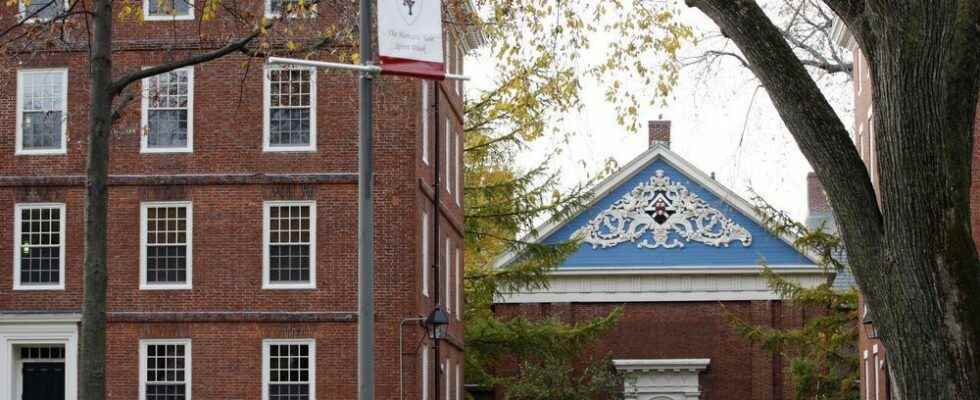American universities hoped to regain color at the start of the school year in September, after the shock of the Covid-19 epidemic. They must have been disillusioned. The number of students enrolled continued to decline for the third consecutive year, by 1.1% compared to 2021, according to a report by the research center of the National Student Clearinghouse (NSCRC), an NGO. In total, there are around 1.5 million fewer registrants than before the pandemic. In the first cycle alone, the number of students is almost 7% lower than at the start of the 2019 academic year.
A worrying drop which, even if it slowed down in the last semester, augurs great upheavals in the university system. “I certainly wouldn’t call it a return to normalcy,” said NSCRC director Doug Shapiro. After two years of historic big declines, it is particularly troubling that enrollment has not picked up, especially in first grade.”
This disaffection with higher education is not new. Between 2011 and 2019, the number of students had already fallen by 11%, or more than 2 million fewer. The reasons are many. When the unemployment rate drops, many young people delay their studies or drop out to find a job.
A downward spiral
America is also experiencing a decline in the birth rate, which translates into fewer generations of college-going age. Added to this is the astronomical cost of education. Annual tuition (including room and board) in a private institution averages more than $55,000, according to the College Board. As a result, a majority of graduates find themselves dragging $30,000 in debt on average, which they take years to repay. Finally, more and more online course programs are emerging, cheaper, more varied and more in tune with the labor market: they break the monopoly of the universities and call into question the value of a university degree. In 2013, 70% of Americans considered it “very important” to have one, compared to 50% in 2019, according to a Gallup poll.
The Covid has at the same time accentuated the disparities between the approximately 4,000 higher education establishments. Both Yale and Princeton, endowed with enormous financial resources, continue to see an influx of students. In 2022, there were 61,200 applicants for 1,950 places at Harvard, an increase of 7%. On the other hand, the other universities, often smaller and less selective, suffer. To attract recruits, they cut tuition fees, which obliges them to reduce the offer of courses, to lay off staff and thus makes them less attractive… It’s the infernal spiral. International customers, although up 9% this semester (after a 15% drop in 2020-21) and paying more, cannot compensate for the loss of revenue. Of the 950,000 foreign students, the Chinese remain the main group, but their number fell by 9% last year.
Nearly 200 establishments have closed over the past decade, four times more than during the previous decade, according to the Wall Street Journal. And that’s just the beginning. These closures not only penalize young people, but they have a devastating impact on small towns affected in the Midwest, for example, where the university is often the only employer with decent jobs. The consequence of the decline of higher education will “reshape the American landscape”, notes Kevin Carey, of the think tank New America.
Universities are therefore frantically looking for solutions to stem the decline. They are creating hybrid, half-online course formats. Many no longer require a national admission test. Others slash tuition fees, giving students discounts and scholarships. They have no choice. Enrollment in online course organizations continues to grow.
